|
Diseases of Poultry
By Ivan Dinev, DVM, PhD
|
LYMPHOID LEUKOSIS
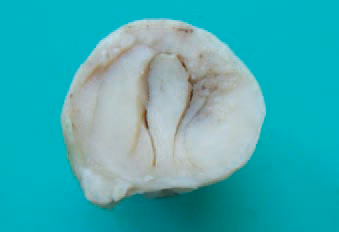
300.. It is characterized by a gradual beginning, persistent low mortality in the flock and diffuse or focal neoplastic growths of lymphoblasts in viscera. The neoplastic changes begin always from the bursa of Fabricius, where various-sized lymphomas are detected (transverse section through neo-plastically grown bursa -fixed preparation).
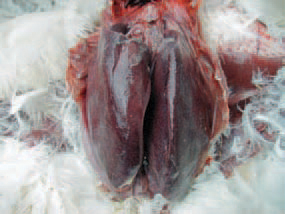

301.302.Clinically, pale comb and wattles, sometimes swelling of the abdomen because of the highly enlarged liver are observed. Diffuse or nodular neoplastic growths could be detected in many organs, but they are more common in the liver, the spleen, the kidneys, the heart and the ovary.
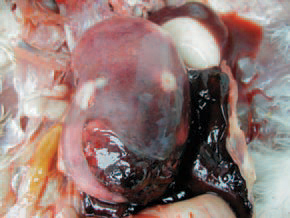
303.Spontaneous rupture of the neoplastically grown spleen, leading to extensive loss of blood. LL is widely distributed worldwide in countries with developed industrial poultry breeding. It is usually observed in birds at the age of 16 weeks and older.
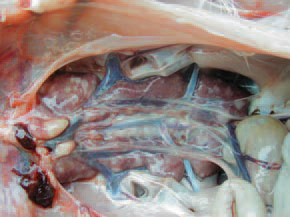
304.Focal neoplastic lesions in kidneys. LL is caused by viruses of the L/S group classified in 10 subgroups: A, B, C, D, E, F, G, H, I and J. The viruses from subgroup A are most prevalent and most frequently associated with LL. Hens, rarely turkeys, pheasants and quails are susceptible.
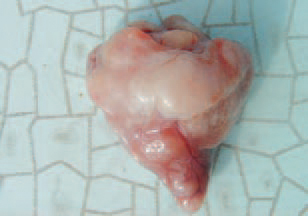
305.Diffuse and focal tumour lesions in the heart. The replication of the virus occurs in albumin secreting glands of the oviduct. The transmission of the infection is performed vertically by egg albumin from one generation to another. The role of cocks is not important for the congenital infection of the progeny. They are only virus carriers and source of venereal infection for other birds.

306.Neoplastically transformed ovary in LL. In some instances, the horizontal infection is also possible but only in chickens in the first few days after hatching, usually via vaccines contaminated with ALSV. The lethal issues are observed for 56 months after the LL outbreak and amount to 5 -15%.
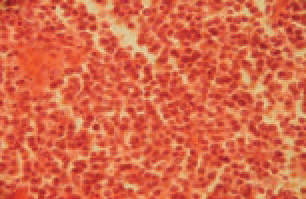
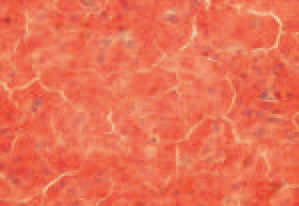
307.308.Histologically, growth of single type lymphoblast cells with marked pyroninophilia is observed.

309In the bursa of Fabricius, a characteristic intrafollicular hyper-plasia is observed.

310.The picture of an imprint preparation from neoplastic lesions shows a layer of single-type lymphoblast cells. LL and MD are hard to be distinguished: in both, lymphoid tumours are present in the same visceral organs, the appearance at the same age is possible, and the visceral lesions could not be differentiated macro-scopically, except in a careful microscopic examination by an experienced pathologist.
FROM THE POINT OF VIEW OF DIFFERENTIAL DIAGNOSIS, THE FOLLOWING FEATURES DESERVE A SPECIAL EMPHASIS:
LYMPHOID LEUKOSIS
- Usually, it is not seen in birds younger than 14 weeks.
- The lethal issues occur mostly at the age between 24 and 40 weeks.
- Distinct nodular tumours.
- Tumours in the bursa of Fabricius.
MAREK'S DISEASE
- Could be observed after the age of 4 weeks too.
- The peak mortality is seen between the 10th and the 20th week, sometimes continues after the 20th week.
- Paralysis.
- "Grey eye".
- In some birds, the bursa of Fabricius is atrophied, in others: neoplastic.






